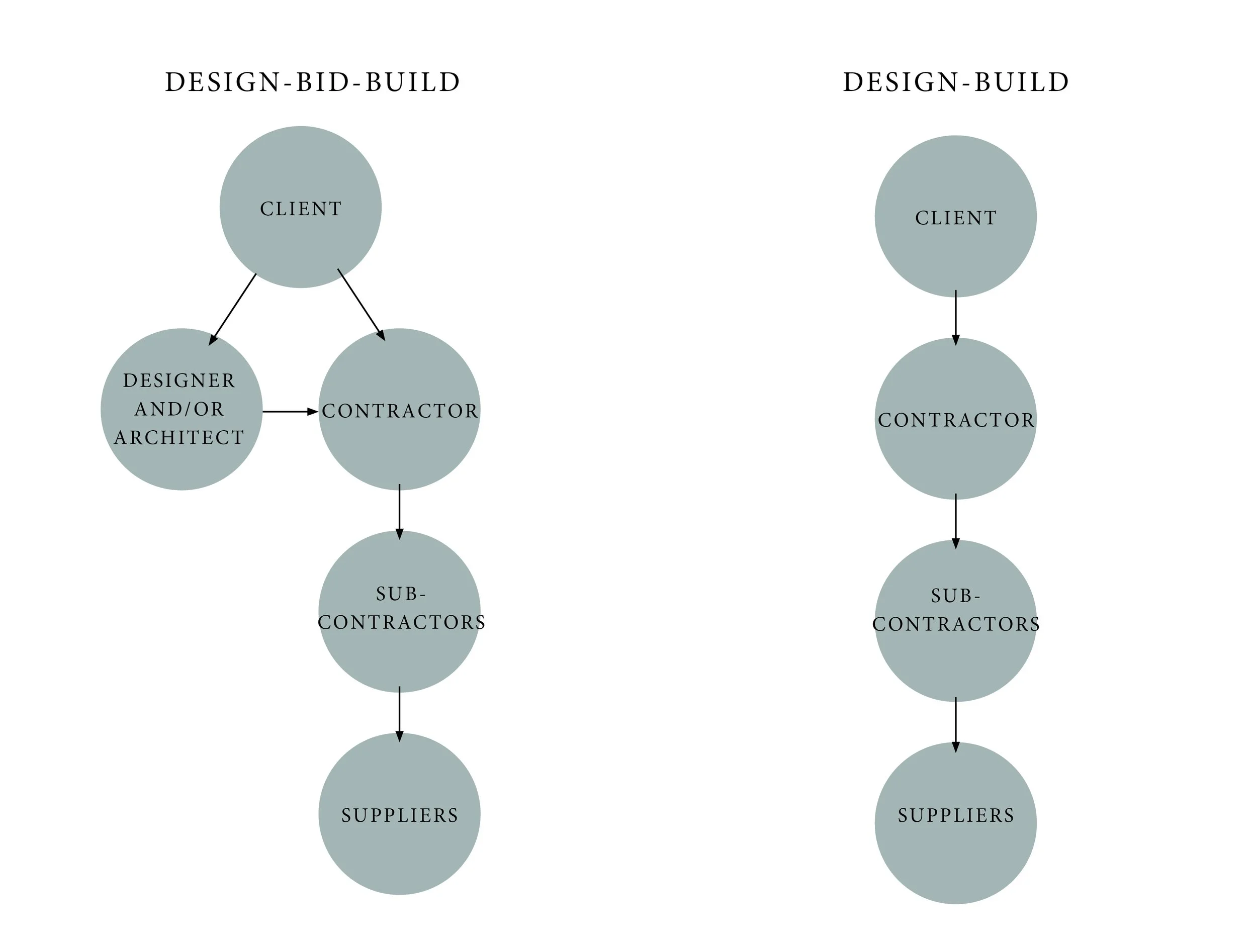design-build vs. design-bid-build
Design-Build and Design-Bid-Build are two common project delivery methods used in construction projects. Each method has its own set of advantages and disadvantages. Here's an outline below of each:
Design-Build:
The Design-Build construction method often begins with the contractor leading both the design and construction phases.
Advantages:
Single Point of Responsibility: With Design-Build, the responsibility for both design and construction rests with a single party, typically a contractor or a team of contractors. This can streamline the decision-making processes.
Faster Project Delivery: Since design and construction overlap, Design-Build projects can often have shorter timelines compared to Design-Bid-Build projects.
Early Collaboration: Design-Build collaboration and communication occurs between contractor and their internal team starting from the beginning of the project.
Disadvantages:
Limited Design Control: Owners may find themselves with reduced influence over the design process due to the integration of design and construction responsibilities within a single entity. Consequently, this integration might result in conflicts, particularly when owners have distinct design preferences. Furthermore, the expedited nature of the design process in this model often means that critical design details receive insufficient attention early on. Presentation of design options and solutions may also be limited and lack the personalized touch typically desired by owners.
Potential for Conflicts of Interest: The single entity responsible for both design and construction may prioritize cost-saving measures over design quality or vice versa, leading to conflicts of interest.
Limited Competition: When a project is given to a single entity, competition may be limited, which could drive prices up and stifle innovation. Without the bidding process, there's no chance to compare prices competitively, which might affect the project's overall cost and innovation.
Owner Dependency on Design-Build Team: Owners are heavily reliant on the competency and integrity of the selected Design-Build team, which could be risky if the team fails to deliver as expected.
Design-Bid-Build:
In the Design-Bid-Build construction method, the project is divided into separate phases: first, the design phase where designers and/or architects and engineers create plans; then, the bidding phase where contractors submit proposals based on those plans; and finally, the construction phase where the chosen contractor builds according to the awarded contract.
Advantages:
Greater Design Control: Owners have more control over the design process since they select the design team separately from the construction team. This allows for more customization and adherence to specific project requirements.
Proactive Planning: By outlining the project design early on and ensuring clarity regarding what will be constructed, designers aim to minimize surprises for the client and potentially reduce the likelihood of change orders later in the project timeline.
Advocate for the Client: Designers advocate for clients and act as a bridge between the client and construction team, advocating for quality craftsmanship and ensuring the final result aligns with the client's vision.
Competitive Bidding: The separation of design and construction allows for competitive bidding among contractors, potentially leading to lower construction costs.
Specialized Professionals Hiring specialized professionals is crucial for leveraging their deep expertise and targeted skills in specific fields. Their training and certifications enable them to navigate complexities effectively, ensuring high-quality results and mitigating risks in various projects.
Adherence to Traditional Processes: Design-Bid-Build follows a more traditional approach to project delivery, which may be preferred by some owners or required for certain projects due to regulatory or contractual reasons.
Disadvantages:
Longer Project Timelines: Design-Bid-Build projects typically have longer timelines since the design must be fully completed before construction can begin.
Potential for Design Revisions: Since the design is completed before construction begins, there may be a possible risk of discrepancies, which may required additional time to correct.
Increased Administration Work: Owners have to manage separate contracts for design and construction, which can result in increased administrative work and potential coordination challenges.
At the end of the day, it's crucial to recognize that contractors and designers have very distinct roles. The choice between Design-Build and Design-Bid-Build hinges on project complexity, owner preferences, budget constraints, and desired timelines. Each method presents its own set of pros and cons, and the right approach will differ based on the unique needs and priorities of the clients.



